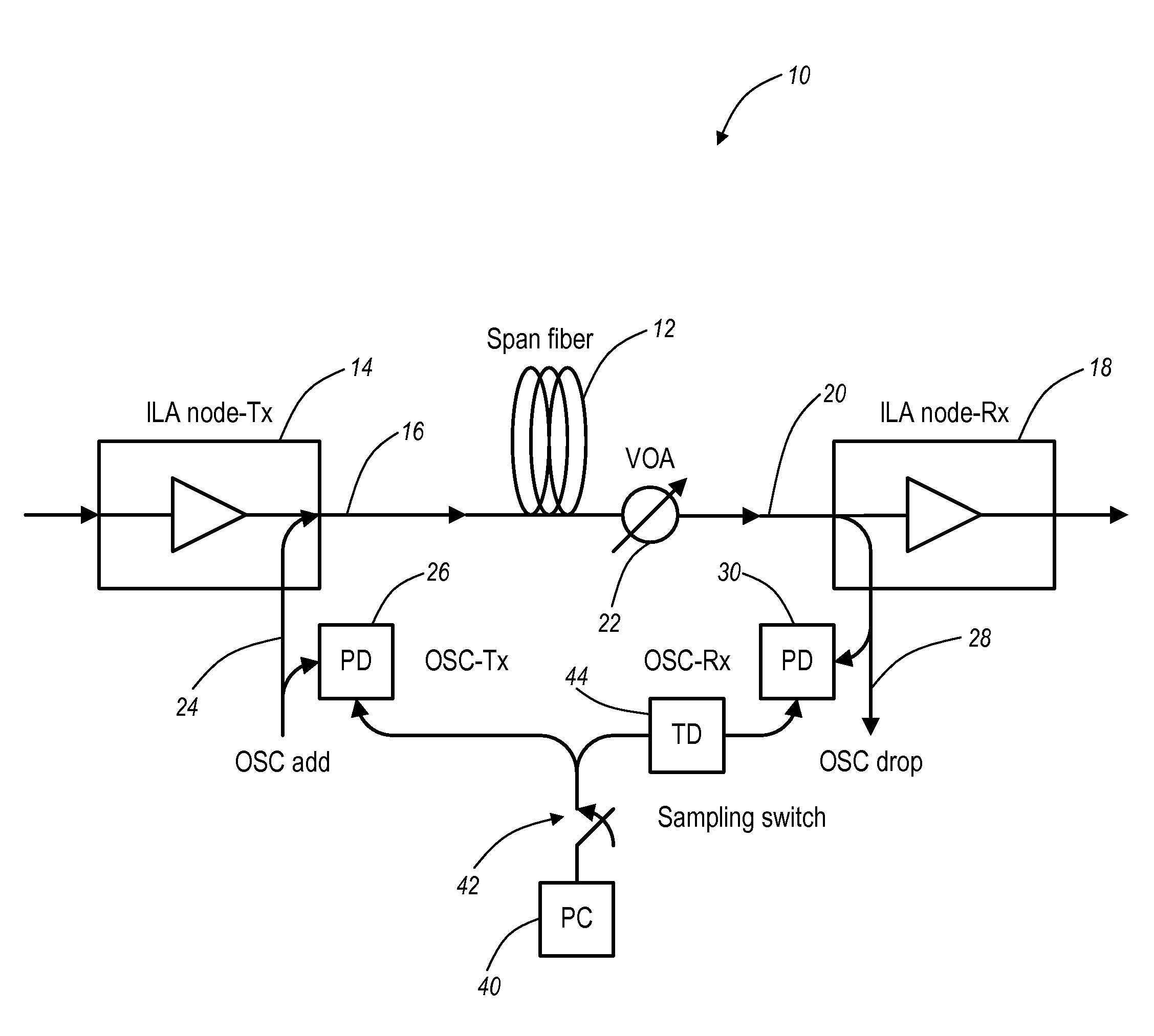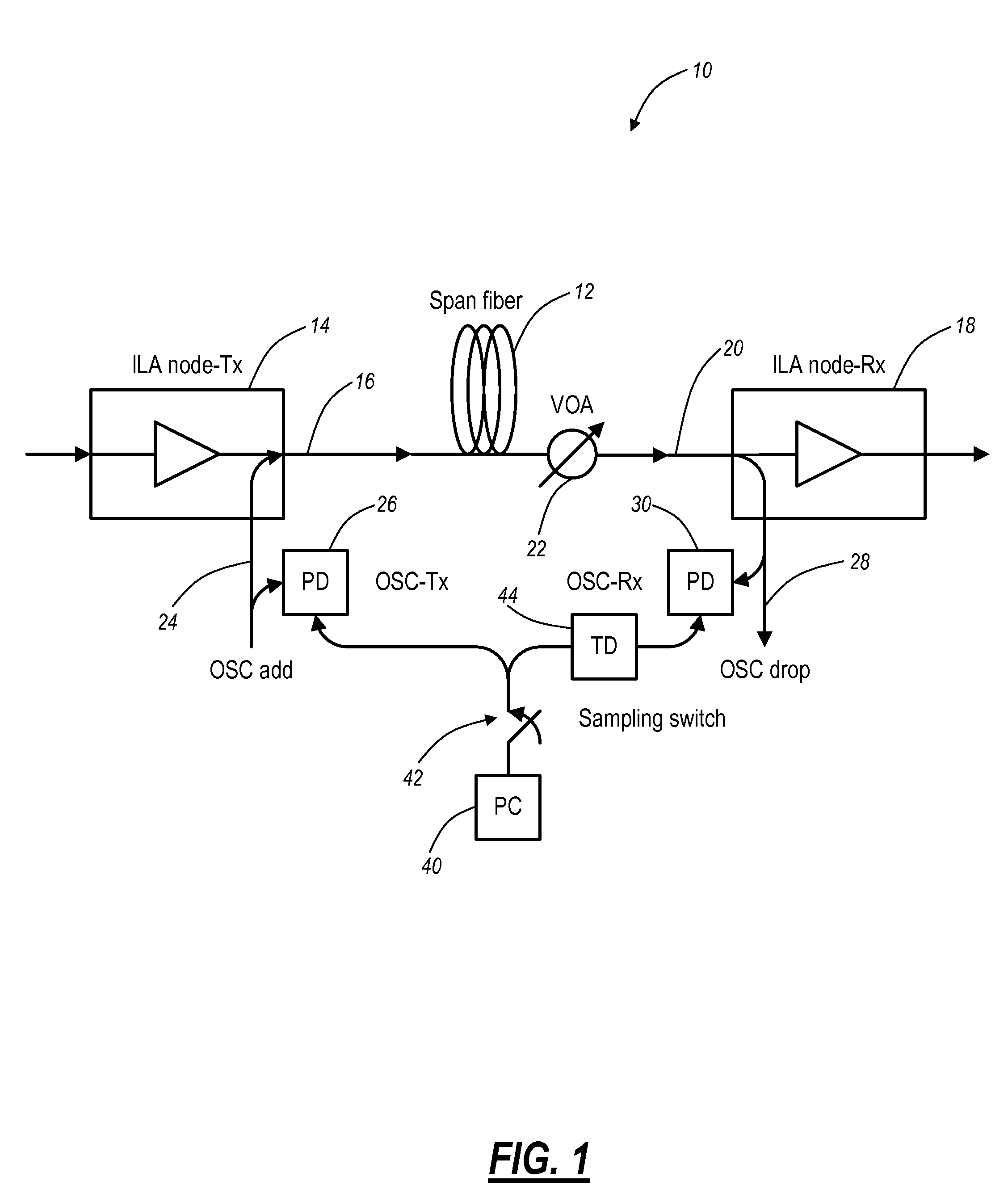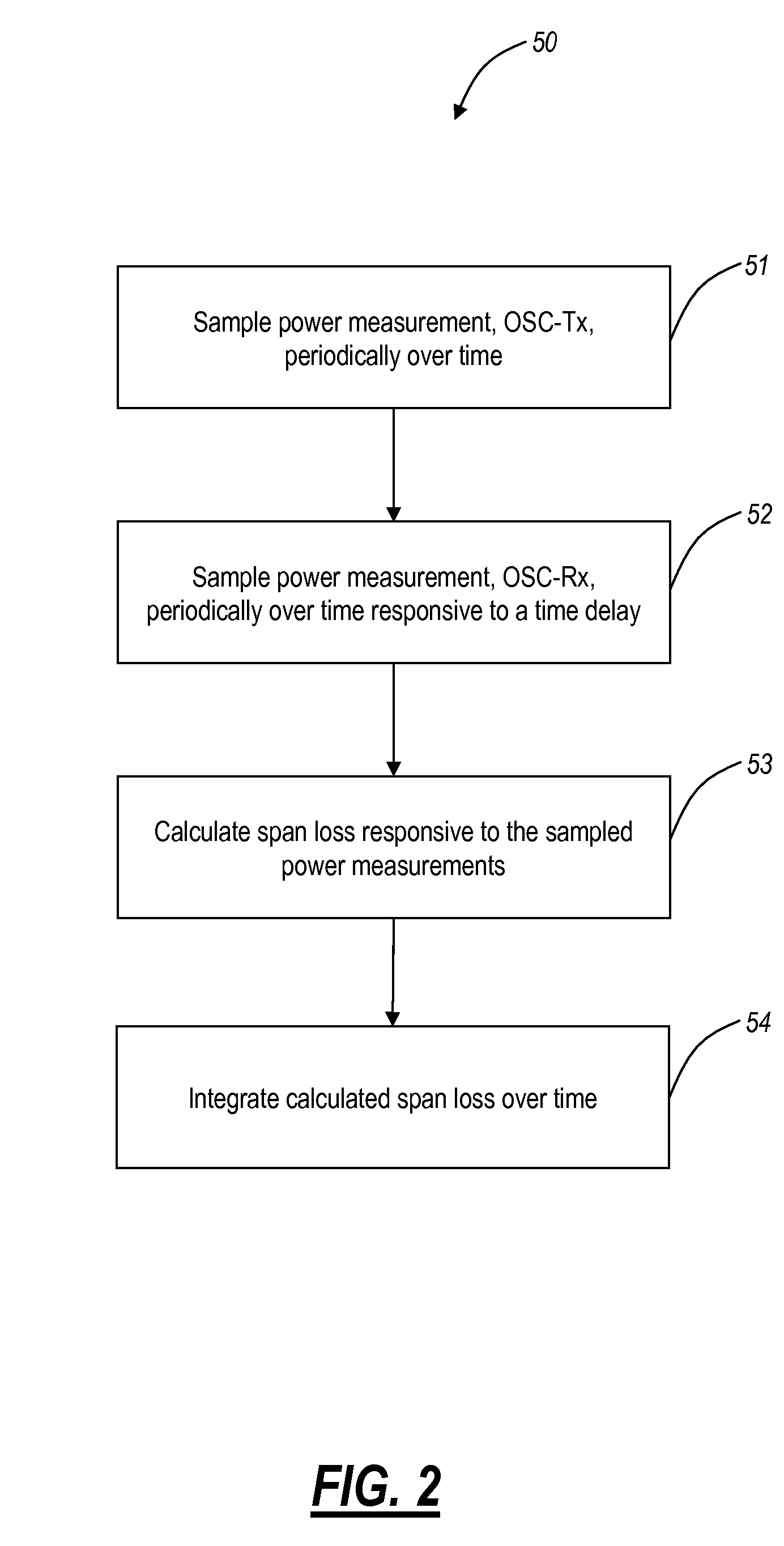Methods and systems for detecting small span loss changes in fiber optic networks
a fiber optic network and small span technology, applied in the field of optical networking, can solve the problems of inability to adapt mechanisms to single-mode fiber, inability to achieve fixed-size fiber optic networks, and inability to use non-standard hardwar
- Summary
- Abstract
- Description
- Claims
- Application Information
AI Technical Summary
Benefits of technology
Problems solved by technology
Method used
Image
Examples
Embodiment Construction
[0024]In various exemplary embodiments, the present invention provides methods and systems for detecting small span loss changes in fiber optic networks. The present invention utilizes existing equipment without additional hardware to provide span loss measurements in a highly accurate manner (i.e., capable of detecting span loss changes of 0.01 dB or 0.03%). In an exemplary embodiment, the present invention utilizes power measurements associated with an optical supervisory channel (OSC) at both ends of a fiber span. These measurements are periodically sampled taking into account propagation time delay along the fiber span. Further, these measurements are integrated or time-averaged to account for temporary fluctuations in the fiber span loss thereby enabling small loss changes to be detected. The present invention can be utilized for intrusion detection (e.g., unwanted fiber taps), fiber degradation detection, and fiber aging performance. The present invention satisfies the criteri...
PUM
 Login to View More
Login to View More Abstract
Description
Claims
Application Information
 Login to View More
Login to View More - R&D
- Intellectual Property
- Life Sciences
- Materials
- Tech Scout
- Unparalleled Data Quality
- Higher Quality Content
- 60% Fewer Hallucinations
Browse by: Latest US Patents, China's latest patents, Technical Efficacy Thesaurus, Application Domain, Technology Topic, Popular Technical Reports.
© 2025 PatSnap. All rights reserved.Legal|Privacy policy|Modern Slavery Act Transparency Statement|Sitemap|About US| Contact US: help@patsnap.com



